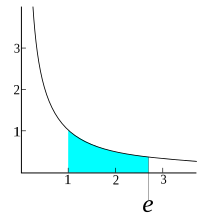
Photo from wikipedia
Background and Objectives: Impaired wound healing represents an unsolved medical issue with a high impact on patients’ quality of life and global health care. Even though hypoxia is a significant… Click to show full abstract
Background and Objectives: Impaired wound healing represents an unsolved medical issue with a high impact on patients’ quality of life and global health care. Even though hypoxia is a significant limiting factor for wound healing, it reveals stimulating effects in gene and protein expression at cellular levels. In particular, hypoxically treated human adipose tissue-derived stem cells (ASCs) have previously been used to stimulate tissue regeneration. Therefore, we hypothesized that they could promote lymphangiogenesis or angiogenesis. Materials and Methods: Dermal regeneration matrices were seeded with human umbilical vein endothelial cells (HUVECs) or human dermal lymphatic endothelial cells (LECs) that were merged with ASCs. Cultures were maintained for 24 h and 7 days under normoxic or hypoxic conditions. Finally, gene and protein expression were measured regarding subtypes of VEGF, corresponding receptors, and intracellular signaling pathways, especially hypoxia-inducible factor-mediated pathways using multiplex-RT-qPCR and ELISA assays. Results: All cell types reacted to hypoxia with an alteration of gene expression. In particular, vascular endothelial growth factor A (VEGFA), vascular endothelial growth factor B (VEGFB), vascular endothelial growth factor C (VEGFC), vascular endothelial growth factor receptor 1 (VEGFR1/FLT1), vascular endothelial growth factor receptor 2 (VEGFR2/KDR), vascular endothelial growth factor receptor 3 (VEGFR3/FLT4), and prospero homeobox 1 (PROX1) were overexpressed significantly depending on upregulation of hypoxia-inducible factor 1 alpha (HIF-1a). Moreover, co-cultures with ASCs showed a more intense change in gene and protein expression profiles and gained enhanced angiogenic and lymphangiogenic potential. In particular, long-term hypoxia led to continuous stimulation of HUVECs by ASCs. Conclusions: Our findings demonstrated the benefit of hypoxic conditioned ASCs in dermal regeneration concerning angiogenesis and lymphangiogenesis. Even a short hypoxic treatment of 24 h led to the stimulation of LECs and HUVECs in an ASC-co-culture. Long-term hypoxia showed a continuous influence on gene expressions. Therefore, this work emphasizes the supporting effects of hypoxia-conditioned-ASC-loaded collagen scaffolds on wound healing in dermal regeneration.
Journal Title: Medicina
Year Published: 2023
Link to full text (if available)
Share on Social Media: Sign Up to like & get
recommendations!